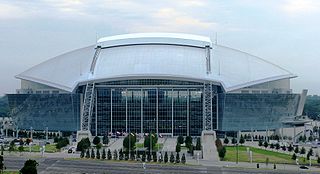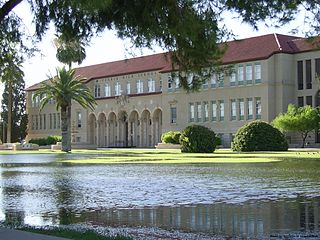Related Research Articles

Phoenix is the capital and most populous city in the American state of Arizona, with 1,608,139 residents as of 2020. It is the fifth-most populous city in the United States, and one of only two state capitals with a population of more than one million residents, along with Austin.

Mesa is a city in Maricopa County, in the U.S. state of Arizona. It is the most populous city in the East Valley section of the Phoenix Metropolitan Area. It is bordered by Tempe on the west, the Salt River Pima-Maricopa Indian Community on the north, Chandler and Gilbert on the south along with Queen Creek, and Apache Junction on the east.

Annie Dodge Wauneka was an influential member of the Navajo Nation as member of the Navajo Nation Council. As a member and three term head of the council's Health and Welfare Committee, she worked to improve the health and education of the Navajo. Wauneka is widely known for her countless efforts to improve health on the Navajo Nation, focusing mostly on the eradication of tuberculosis within her nation. She also authored a dictionary, in which translated English medical terms into the Navajo language. She was awarded the Presidential Medal of Freedom in 1963 by Lyndon B. Johnson as well as the Indian Council Fire Achievement Award and the Navajo Medal of Honor. She also received an honorary doctorate in Humanities from the University of New Mexico. In 2000, Wauneka was inducted into the National Women's Hall of Fame.

Arizona Veterans Memorial Coliseum is a 14,870-seat multi-purpose indoor arena in Phoenix, Arizona, located at the Arizona State Fairgrounds. It hosted the Phoenix Suns of the National Basketball Association from 1968 to 1992, as well as indoor soccer, roller derby and major and minor league ice hockey teams.

The history of Arizona encompasses the Paleo-Indian, Archaic, Post-Archaic, Spanish, Mexican, and American periods. About 10,000 to 12,000 years ago, Paleo-Indians settled in what is now Arizona. A few thousand years ago, the Ancestral Puebloan, the Hohokam, the Mogollon and the Sinagua cultures inhabited the state. However, all of these civilizations mysteriously disappeared from the region in the 15th and 16th centuries. Today, countless ancient ruins can found in Arizona. Arizona was part of the state of Sonora, Mexico from 1822, but the settled population was small. In 1848, under the terms of the Mexican Cession the United States took possession of Arizona above the Gila River after the Mexican War, and became part of the Territory of New Mexico. By means of the Gadsden Purchase, the United States secured the northern part of the state of Sonora, which is now Arizona south of the Gila River in 1854.

HKS, Inc. is an American international architecture firm headquartered in Dallas, Texas (USA).
Park Central Mall was the first shopping mall in Phoenix, Arizona. It is located in Encanto Village, on Central Avenue and Osborn Road.

Coronado High School is a public high school located in Scottsdale, Arizona, USA. The school enrolled 1,044 students in the 2016–2017 school year. Students primarily come from feeder schools in the Scottsdale Unified School District.

Ralph Haver (1915-1987) was an architect working in metropolitan Phoenix, Arizona, USA, from 1945 until the early 1980s. Haver designed the Mid-Century Modern Haver Homes, affordable tract housing executed in a contemporary modern style.

Maryvale is an urban village of Phoenix, Arizona.
The Cine Capri was a movie theater located in Phoenix, Arizona, United States, which operated from 1966 to 1998.
Rezball, short for "reservation ball," is the avidly followed Native American version of basketball, particularly a style of play specific to Native American teams of some areas.
The Harvard Project on American Indian Economic Development was founded in the year 1987 at the John F. Kennedy School of Government, Harvard University. It administers tribal awards programs as well as provides support for students and conducting research. The Harvard Project aims to understand and foster the conditions under which sustained, self-determined social and economic development is achieved among American Indian nations through applied research and service.

The Sunnyslope community is an established neighborhood within the borders of the city of Phoenix, Arizona. The geographic boundaries are 19th Avenue to the west, Cactus Road to the north, 16th Street to the east, and Northern Avenue to the south. This area covers approximately nine square miles and is divided into nine census tracts. The Sunnyslope community is included in parts of three zip code areas: 85020, 85021 and 85029.

Lescher & Mahoney was an American architectural firm from Phoenix, Arizona.

The Phoenix Indian School, or Phoenix Indian High School in its later years, was a Bureau of Indian Affairs-operated school in Encanto Village, in the heart of Phoenix, Arizona. It served lower grades also from 1891 to 1935, and then served as a high school thereafter. It opened in 1891 and closed in 1990 at the orders of the federal government. During its existence, it was the only non-reservation BIA school in Arizona.

Kemper Goodwin was a noted architect from Tempe, Arizona. He specialized in educational buildings. Some of his buildings are listed on the National Register of Historic Places in Arizona.

Edward Leighton Varney Jr. (1914–1998) was an American Modernist architect working in Phoenix, Arizona from 1937 until his retirement in 1985. He designed the Hotel Valley Ho in Scottsdale, and Sun Devil Stadium at Arizona State University. In 1941 began his career, which would extend to his retirement in 1985. His firm would continue designing buildings into the 1990s.
Valleywise Health is a network of taxpayer-funded hospitals and medical facilities in Maricopa County, Arizona.
Banner Desert Medical Center, formerly Desert Samaritan Medical Center, or “Desert Sam," is a 615-bed non-profit, short-term acute care hospital located in Mesa, Arizona adjacent to the border with Tempe, providing tertiary care and healthcare services to the East Valley portion of the greater Phoenix area. It is designated by the Arizona Department of Health Services (ADHS) as a Level I trauma center. It is part of the locally-based, regional Banner Health system of non-profit hospitals and clinics.